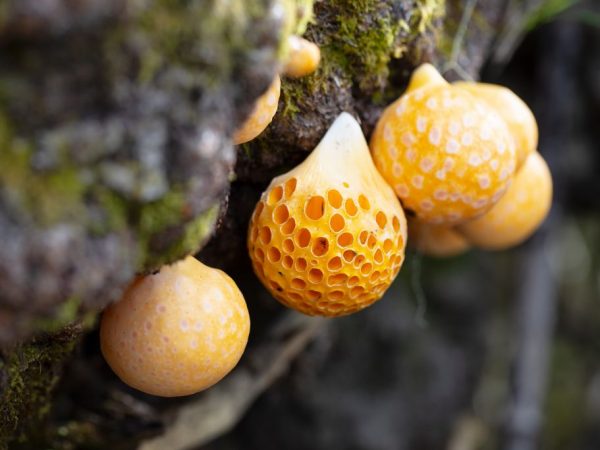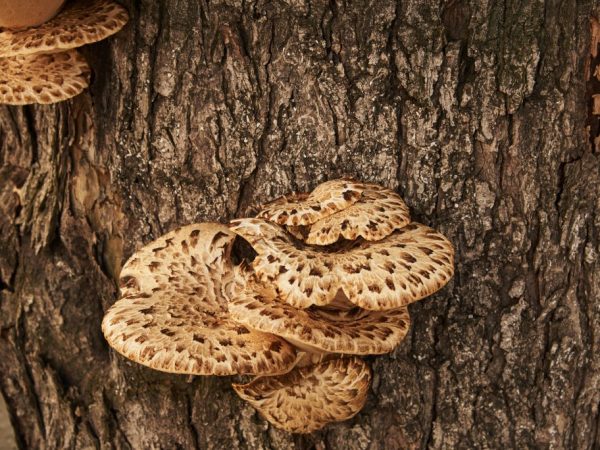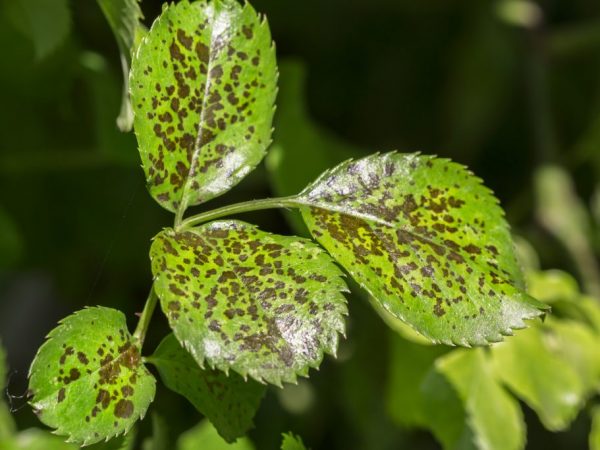The harm of parasitic fungi
Parasitic fungi receive the necessary nutrients from living organisms on which they settle. They parasitize not only in forests and gardens, but also in fields, affecting agricultural crops. And some species pose a danger to human health.

Harm of fungi parasites
Parasites in the fields
The following parasites are parasites on agricultural crops:
- smut;
- ergot;
- rust fungus.
Head mushrooms
This group of parasitic fungi prefers cereals. Most often they settle on barley, wheat or oats. Occasionally found in corn fields and millet. There are many varieties of smut fungi, each of which affects a specific culture. About 20 species are widespread in Russia. The ability to adapt to any climatic conditions makes smut control much more difficult. A soot-like bloom appears on the affected plants (fruits, seeds). Disputes spread quickly. The smut can destroy the entire crop.
The fight against the parasite is not limited to the destruction of the affected ears. Spores remain in the ground and form myceliums in new seedlings. The fight against smut includes disinfection of the land, which is expressed in the fact that for several years it is better to plant plants on the site that are not affected by the parasitic fungus of this variety. You can plant hybrid varieties of cereals that are smut resistant.
Ergot
Ergot is a parasitic fungus that prefers wheat. Sometimes it affects other cereals. Ergot can harm the human body. It causes eating disorders and poisoning. After the wheat has begun to spike, the first signs of damage appear. Sweet discharge with a specific smell appears on the spikelets, attracting various insects (flies, midges, etc.). These insects carry spores. After sweet discharge, sclerotia appears. They resemble horns in shape, are painted in a dark purple color, sometimes there is a purple tint. Their length varies from 3 to 5 cm. Healthy wheat grains do not exceed 1.5-2 cm in length. Fallen horns that have wintered in the ground are a source of diseases.
Irina Selyutina (Biologist):
Ergot is one of the most famous poisonous (toxic) mushrooms. The toxic substances caused by the ergot alkaloids were previously widespread in Europe, and the number of victims was close to the death toll from plague and cholera. Clavicepsotoxicosis, or ergotism, is caused by the ability of ergot toxins to cause contractions of smooth muscles and blood vessels, as well as the effect on the nervous system. It is known in two forms:
- gangrenous ("Antonov fire");
- convulsive ("angry cramps").
It is difficult to destroy a harmful microorganism that has appeared on the site.To minimize the likelihood of infection in grain fields, it is necessary to use high-quality planting material and timely destroy weeds. It is advisable to decontaminate the seeds, and treat the fields with fungicides. Most often, ergot appears on neglected land plots.
Rust fungus
This parasite got its name from its appearance. It prefers cereals, but sometimes appears on ferns and flower crops. Plants develop brown or reddish-brown lesions. Depending on the type of rust fungus, and there are a huge number of them, this formation has the shape of a bowl, glass or cylinder. Sometimes it is dispersed to almost everyone on the leaves and stems of plants, and sometimes not. The leaves of diseased plants change shape and turn yellow.
Rust fungi are obligate parasites. This means that their life cycle and the life cycle of the host are coordinated with each other and the parasite is unable to survive without its host. Often, they need 2 different hosts for their development. In the case of cereals, the second host is the barberry. To avoid contamination of the fields, these crops are not planted nearby. It is also better to use parasite-resistant hybrid varieties, harvest and feed on time. The affected crops are treated with fungicides.
Parasites in the forests

Polypores infect the bark and wood of the tree
harm to forestry is caused by:
- tinder fungus;
- autumn mushroom;
- winter mushroom;
- curly griffins.
Tinder
Polypores settle on trees. They prefer deciduous forests, but sometimes they settle on garden crops (apple trees, pears). These parasitic fungi externally infect the bark of a tree. Over time, the mycelium penetrates the tissue, affecting the trunk. The tree becomes rotten, hollows appear. As a result of this symbiosis, the tree ceases to bear fruit and dies. Most often, parasitic fungi appear on infected or weak trees.
Control measures include thorough cleaning of the affected area of the trunk and its decontamination. If a branch is affected, it is better to cut it off and burn it. Preventive measures include regular maintenance of horticultural and forestry crops. If burns or hollows appear on the tree, they are cleaned, covered with a solution of clay and water and covered with a bandage. Places of cuts must be treated with garden varnish. Also, you should not allow the appearance of parasitic insects that damage tree bark.
There are many varieties of edible polypores.
Autumn honey agaric
Autumn honeydew, or real, is often a dangerous parasite that causes white rot of wood. It affects about 200 species of higher plants. Its mycelium is represented by rhizomorphs - dark brown, almost black cords that penetrate the bark of the tree and infect the cambial layer located between the bark and the wood.
Irina Selyutina (Biologist):
Cambium is an educational tissue, due to cell division and differentiation of which bast cells (secondary cortex) are formed to the outside, and towards the center - wood cells. As a rule, much more wood cells are formed than bast cells, approximately in a ratio of 5-10: 1. The rhythmic growth of the stem in thickness occurs due to the seasonal activity of cambium cells.
The tree resists the growing fungus by releasing protective substances. However, mycelium mushroom also, in turn, releases toxins that poison the tree. A young tree dies in 1-3 years after infection, an old one - in 10 years.
Winter mushroom
An edible winter mushroom, or winter mushroom, or velvety-footed flammulina, in addition to living on the fallen trunks of various deciduous species, also settles on living trees, leading them to death. Its name - "winter honey agaric", the mushroom got due to its ability to bear fruit all year round, especially in southern countries.In addition to the ability to bear fruit in winter, this species of honey agaric can restore cells destroyed during severe frosts, as soon as the temperature becomes slightly above zero.
Curly griffin
This parasitic fungus prefers deciduous forests and is edible. It is widespread throughout the country. The harm caused by curly griffin negatively affects the life span of the tree, which is reduced to 10-15 years. But this mushroom also has beneficial properties. With its help, diseases such as tuberculosis and vitamin deficiency are treated, it stabilizes the level of cholesterol in the blood. The use of griffins is invaluable for those who are losing weight. This species is included in the Red Book of Russia.
By the way. Very often, the ram mushroom, or curly griffin, is called the umbrella griffin and curly sparassis.
Parasites on shrubs and vegetables

Phytophthora is caused by fungal spores
Vegetable crops and shrubs are affected by late blight, scab, and rot. All of these diseases cause fungal spores.
- Late blight: late blight fungus affects potatoes, tomatoes, cucumbers and peppers, i.e. representatives of the Solanaceae family. Foliage wilting occurs first. Then dark brown spots appear on the leaves and fruits.
- Powdery mildew: the disease is caused by several types of fungi (spheroteka, uncinula) most often affects gooseberries. A white bloom appears on the fruit. Plants can be damaged in spring and autumn.
- Fruit tree scab: the venturia fungus forms velvety spots of olive color and small diameter on the leaves and fruits.
- Gray rot: caused by a fungus called botrytis. The fruits of the affected plant are first covered with white and then black-brown bloom. Rot is formed under bloom.
Any fungal disease develops quickly, which is why treatment begins after the first signs of the disease appear. All parts of the plant affected by the fungus are destroyed. Then the plants are treated with special preparations in strict accordance with the instructions attached to them. After harvesting, the land is disinfected. A preventive measure is the observance of crop rotation. It is convenient to monitor the crop rotation using the table, the rows of which are the name of the grown crop, and the columns are the years. Crop rotation (multi-field) can be 3, 4, 5-field, etc.
It cannot be said that any of the listed parasites are more or less dangerous. With any of them you have to fight, tk. ultimately they lead to the death of the host organism.
Parasites in the human body
Fungal spores do not only inhabit trees, shrubs, and cereals. There are known examples when they parasitize on the body of animals and humans. So, cordyceps, belonging to the class of higher fungi, affects the body of caterpillars. It develops inside the insect larva, sucking out nutrients from it. This leads to the death of the host, and the cordyceps itself grows through the body of the caterpillar for some time. As a result of this kind of symbiosis, the caterpillar turns into a mummy. But the harmful parasite is widely used in traditional medicine.
There are parasitic microorganisms in humans. They come from the external environment and disrupt the work of the gastrointestinal tract, which is why it is important to monitor nutrition and not eat foods that have not undergone heat treatment. Fruit should be washed thoroughly.
Some mushrooms in humans live imperceptibly, while others manifest themselves immediately after their appearance in the body. They settle most often on mucous membranes. As for the symptoms, the parasitic microorganism causes diseases that are associated with skin peeling. A prime example is psoriasis, which is virtually untreatable. The lower fungi include mold, which provokes serious diseases associated with the respiratory system. There are parasitic microorganisms not only in humans, but also in the body of animals. Getting rid of them is difficult.
Helps destroy parasitic organisms that cause allergies and eating disorders, propolis tincture, onion and garlic. Pharmacies sell special antifungal medications. They contain active ingredients that destroy fungal spores.
Conclusion
The damage caused by parasitic fungi, which can be optional or obligate, should not be underestimated. The affected fruit crop begins to bear fruit poorly. The same goes for grain crops. Fungal diseases spread quickly and are difficult to treat. For a complete cure, it is necessary to carry out a comprehensive treatment.



